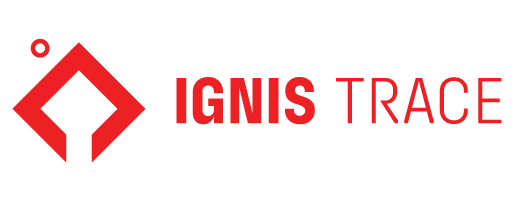In industrial plants, maintaining precise temperature control is essential for ensuring operational safety, product quality, and energy efficiency. Among the various temperature-sensing technologies available, the thermocouple stands out due to its durability, wide temperature range, and rapid response time. Thermocouples are used extensively across different industries where high temperatures or harsh conditions are present, making them a crucial component in process control and monitoring systems.
This guide will explore the extensive thermocouple areas of use within industrial environments, covering industry-specific applications, system advantages, and how to select the right thermocouple type based on operational needs. We'll also discuss the fundamental thermocouple working principle, its internal thermocouple structure, and integration with auxiliary components such as thermocouple cable. Additionally, we will highlight how thermocouples can be effectively paired with heat trace systems to prevent freezing and maintain consistent temperatures in pipelines and tanks. By understanding these aspects, engineers and facility managers can make informed decisions that enhance safety, minimize downtime, and optimize energy usage in their plants.
Use of Thermocouples in Industrial Plants
Thermocouples play a vital role in monitoring and controlling temperatures in industrial environments where precision and reliability are paramount. These sensors are favored due to their ability to withstand extreme heat, respond quickly to temperature changes, and function in corrosive or high-pressure environments. Whether monitoring the internal temperature of furnaces, heating fluids in chemical reactors, or tracking thermal conditions in manufacturing lines, the thermocouple offers a practical and scalable solution. Their simplicity in design, low cost, and compatibility with various control systems make them ideal for continuous operations in demanding applications.
A typical thermocouple structure consists of two dissimilar metal wires joined at one end, forming a sensing junction. When this junction experiences a temperature change, a voltage is generated based on the thermocouple working principle—the Seebeck effect. This voltage is then interpreted by a monitoring system to display accurate temperature readings. The thermocouple sensor must be selected based on the operating temperature range, surrounding environment, and expected chemical exposure. Additionally, a high-quality thermocouple cable is essential for signal integrity, particularly in large-scale facilities where long transmission distances are common. When combined with heat trace systems, thermocouples can offer even more robust solutions by maintaining desired temperatures along pipelines, tanks, and sensitive equipment.
Use Cases of Thermocouples in Different Industries
The versatility of thermocouple technology allows it to be applied across a broad spectrum of industries, each with unique temperature monitoring demands. From high-temperature chemical reactions to strict hygiene standards in food production, thermocouples are customized to meet specific requirements. Their robust performance in environments with intense heat, vibration, and corrosive materials makes them indispensable in sectors such as petrochemicals, pharmaceuticals, energy, and food processing. The ability to tailor sensor design and material composition to fit the industry’s needs gives thermocouples a major advantage over other sensing technologies.
In each industrial application, the type of thermocouple sensor selected must align with operational goals. For instance, the energy industry often uses high-temperature-resistant thermocouples with reinforced shielding, while the food sector may require hygienic-grade sensors with fast response times. Moreover, environmental factors—such as exposure to steam, acids, or pressure—will affect sensor lifespan and reliability. Using the correct thermocouple cable, resistant to interference and degradation, ensures signal consistency. Integrating these systems with heat trace solutions adds another layer of temperature control, preventing heat loss and avoiding critical process interruptions. Let’s now explore how thermocouples function in specific industries through real-world examples.
Use of Thermocouples in Petrochemical Plants
In petrochemical plants, where extreme heat, pressure, and corrosive substances are a daily reality, the thermocouple serves as a critical component for temperature monitoring and safety assurance. These sensors are often installed in reactors, distillation columns, furnaces, and heat exchangers to ensure that process temperatures remain within safe and efficient limits. Accurate temperature data helps maintain the integrity of chemical reactions and prevents equipment damage or hazardous failures.
Given the harsh conditions, the thermocouple structure used in petrochemical settings is typically reinforced with protective sheaths made from high-performance alloys like Inconel or stainless steel. This prevents degradation from acidic vapors or high-pressure steam. Additionally, a durable, shielded thermocouple cable is essential for reliable signal transmission over long distances to control units. Integration with heat trace systems is also common, especially for pipelines and outdoor tanks, where temperature drops can lead to solidification or blockages. By ensuring real-time monitoring and precise temperature control, thermocouples significantly contribute to the safety, efficiency, and regulatory compliance of petrochemical operations.
Use of Thermocouples in Food Production Lines
In food production, maintaining strict temperature control is vital for ensuring food safety, preserving nutritional value, and meeting regulatory standards. The thermocouple is widely used across various stages of processing—from cooking and pasteurization to refrigeration and packaging—thanks to its fast response time and adaptability. Whether it’s monitoring the internal temperature of baked goods or ensuring proper sterilization during packaging, thermocouples play a key role in maintaining consistent quality.
The thermocouple sensor used in food environments is typically made from stainless steel with smooth, hygienic surfaces that resist contamination and support CIP (Clean-In-Place) procedures. The thermocouple structure in these settings is often compact and sealed to prevent the ingress of moisture or food particles. To maintain signal integrity in humid or wet conditions, food plants rely on moisture-resistant thermocouple cable with food-grade insulation. In refrigerated zones or piping systems that require temperature stability, thermocouples are often used in conjunction with heat trace systems to prevent freezing or condensation. These technologies work together to ensure safe and efficient production, minimizing spoilage and maximizing compliance with health regulations.
Use of Thermocouples in Power Plants
Power plants operate in high-temperature, high-pressure environments where real-time temperature monitoring is essential for safety and efficiency. The thermocouple is a key component in these facilities, used to track temperatures in boilers, turbines, exhaust systems, and cooling circuits. Accurate temperature readings help maintain optimal energy conversion, prevent overheating, and extend the lifespan of critical equipment.
In these demanding applications, the thermocouple structure must be capable of withstanding temperatures exceeding 1000°C, often with insulation and shielding against electrical noise and thermal stress. Specialized thermocouple sensor types, such as Type K or Type N, are commonly chosen for their reliability under extreme conditions. The power industry also relies on rugged thermocouple cable, often shielded and armored, to ensure data integrity in electrically noisy environments. Additionally, heat trace systems are used in combination with thermocouples to maintain fluid temperatures in auxiliary systems, prevent pipe freezing, and ensure steady fuel or steam flow. By leveraging these technologies, power plants optimize operational output while minimizing downtime and maintenance risks.
Use of Thermocouples in the Pharmaceutical Industry
In the pharmaceutical industry, temperature precision is critical to ensuring product integrity, compliance with regulatory standards, and the sterility of production environments. The thermocouple is a vital tool used in autoclaves, bioreactors, drying ovens, and storage systems to monitor and control temperature throughout the manufacturing process. Even minor temperature deviations can compromise the stability or efficacy of pharmaceutical compounds, making accurate thermal control essential.
To meet stringent industry requirements, the thermocouple sensor used in pharmaceutical environments is often constructed from corrosion-resistant materials and designed for easy sterilization. The thermocouple structure is typically compact, sealed, and compliant with standards such as FDA and GMP. To prevent interference or data loss, facilities use shielded thermocouple cable with high-grade insulation. These sensors are also commonly integrated with validation systems to record and verify temperature data. In cold-chain logistics or in facilities where maintaining specific temperatures is essential, heat trace systems work in conjunction with thermocouples to preserve thermal conditions and ensure uninterrupted operations. These combined solutions help pharmaceutical manufacturers meet high standards for safety, accuracy, and documentation.
Industrial Thermocouple Systems Compatible with Ignis Trace Solutions
Ignis Trace provides advanced thermal management solutions tailored to the needs of modern industrial environments. Its product range includes high-performance thermocouple systems that are designed to integrate seamlessly with industrial process control and heat trace technologies. These systems offer precision, durability, and reliability, making them ideal for applications where accurate temperature measurement is critical to both safety and efficiency.
Ignis Trace thermocouples are engineered with robust thermocouple structure designs that can withstand extreme temperatures and harsh chemical exposure. Depending on the use case, the sensors are available in various types—such as Type J, K, or N—and can be installed with customized mounting hardware. The thermocouple sensor offerings from Ignis Trace are complemented by specially developed thermocouple cable options that ensure secure, interference-free signal transmission even across long distances in large facilities. These components are optimized for compatibility with Ignis Trace’s heat trace systems, enabling coordinated thermal control across entire industrial setups—from production lines to critical pipeline systems. By offering complete, integrated thermal monitoring solutions, Ignis Trace helps clients improve operational uptime, minimize maintenance, and meet compliance requirements with confidence.
Causes of Thermocouple Failures in Industrial Plants
Despite their durability, thermocouple systems can experience failures over time due to harsh industrial conditions and improper handling. Understanding the common causes of these failures helps prevent costly downtime and ensures consistent performance. One of the most frequent issues is sensor degradation caused by prolonged exposure to extreme heat, corrosive chemicals, or mechanical stress. Over time, these conditions can compromise the thermocouple structure, leading to inaccurate readings or complete sensor failure.
Another common cause is poor installation practices. If a thermocouple sensor is not mounted properly, or if it’s exposed to electrical noise and thermal gradients beyond its specification, the measurement accuracy can be affected. Using low-quality or incompatible thermocouple cable may also lead to signal loss or electrical interference, especially in high-noise environments. Additionally, lack of regular calibration and maintenance can allow small inaccuracies to develop into major problems. In environments where temperatures fluctuate rapidly, sensors may crack or wear prematurely due to thermal cycling. When used in systems with heat trace components, poor synchronization or faulty integration can result in inefficient temperature regulation or unexpected sensor damage. Identifying these root causes early allows for timely maintenance and improved reliability across thermal control systems.
Considerations for Thermocouple Selection in Industrial Plants
Selecting the right thermocouple for an industrial application requires careful consideration of several key factors to ensure accurate temperature monitoring and long-term reliability. The first step is identifying the temperature range the sensor will operate in. Different thermocouple types—such as Type J, K, or T—offer varying performance characteristics suited to specific temperature ranges and environments. For example, Type K is ideal for high-heat industrial processes, while Type T may be more suitable for cryogenic applications.
Beyond temperature range, it’s essential to assess the operating environment. Will the sensor be exposed to moisture, vibration, corrosive chemicals, or electrical noise? The thermocouple structure must be designed to resist these conditions, using protective sheaths, durable insulation, and suitable sensor tip configurations. The choice of thermocouple sensor must also align with the required accuracy, response time, and installation type—whether surface-mounted, immersion-based, or clamp-on. Equally important is the thermocouple cable, which must be selected for its insulation type, shielding properties, and resistance to interference in electrically noisy areas.
Compatibility with automation systems and heat trace setups should also be considered. Integration between these systems ensures accurate temperature regulation across pipelines, tanks, and equipment exposed to the elements or needing precise thermal management. Understanding the thermocouple working principle is crucial in choosing components that work harmoniously together. Consulting with thermal systems experts—such as the team at Ignis Trace—can help ensure the right combination of materials, configurations, and system compatibility to meet industrial goals with confidence.

 Türkçe
Türkçe



